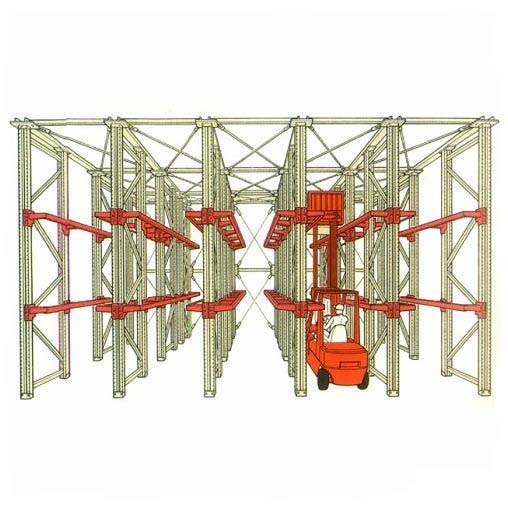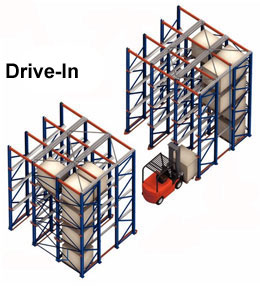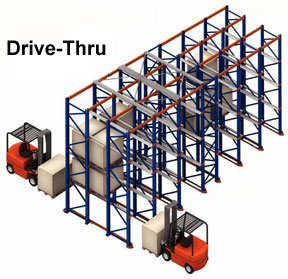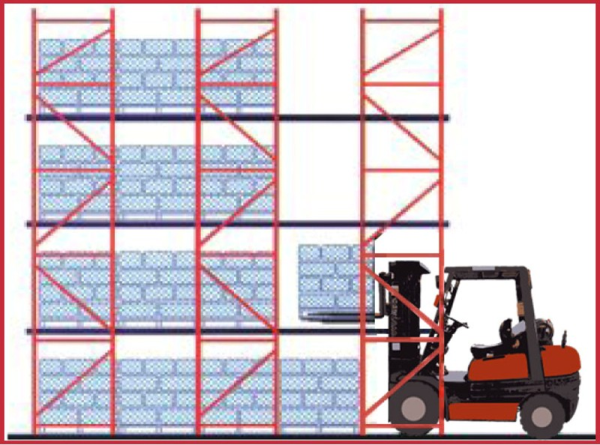Drive-In & Drive-Thru
 Drive-In Rack and Drive-Thru racking are terms that are often used interchangeably. In some environments it can be difficult to differentiate between the two. Typically, Drive-In racking requires operators to drive into the racking system from one side and remove pallets from the same entry point. Some Drive-In rack systems have a wall or are otherwise closed at the opposite end.A simple way to identify a Drive-In Rack Systems is its LIFO inventory management. Product is rotated in a Last-In, First-Out inventory manner because of the single entry/exit point.
Drive-In Rack and Drive-Thru racking are terms that are often used interchangeably. In some environments it can be difficult to differentiate between the two. Typically, Drive-In racking requires operators to drive into the racking system from one side and remove pallets from the same entry point. Some Drive-In rack systems have a wall or are otherwise closed at the opposite end.A simple way to identify a Drive-In Rack Systems is its LIFO inventory management. Product is rotated in a Last-In, First-Out inventory manner because of the single entry/exit point.
The advantage of a Drive-In rack system is its extremely efficient storage concentration. Pallets are stored back-to-back without aisles for exceptionally dense storage. This style system is an excellent solution for product that is not time or date sensitive, or for fast moving pallets that are rotated frequently.
Need Information or Pricing
Request A Quote
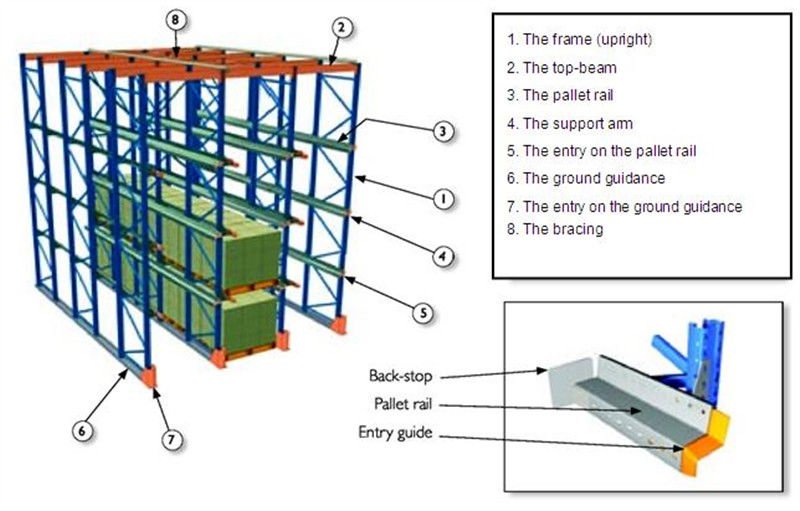
Drive-In & Drive-Thru pallet rack systems are a cost effective solution to high-density storage needs. Drive-In and Drive-Thru Pallet Rack Systems store product on continuous rails that allow lift trucks to enter the rack structure to place and retrieve pallets. Fewer aisles are required, thus increasing storage density by up to 75%.
Drive-In pallet rack uses a common entry/exit, while Drive-Thru rack has a separate entry and exit, needing two aisles and more space. Drive-In pallet rack systems are the highest density storage solution available. These “last-in, first-out” storage systems are ideal for warehousing similar products on like-sized pallets, or for cooler and freezer applications.
Drive-In racks are typically subject to more abuse than selective racks due to the way they are utilized, so the rack integrity and strength are important factors.
Drive-In pallet storage racks are available in a variety of rail styles including Roll-Formed and Structural Angle Rail. These options allow us to design a drive-in rack system to fit any budget, loads or ceiling height limitations.
